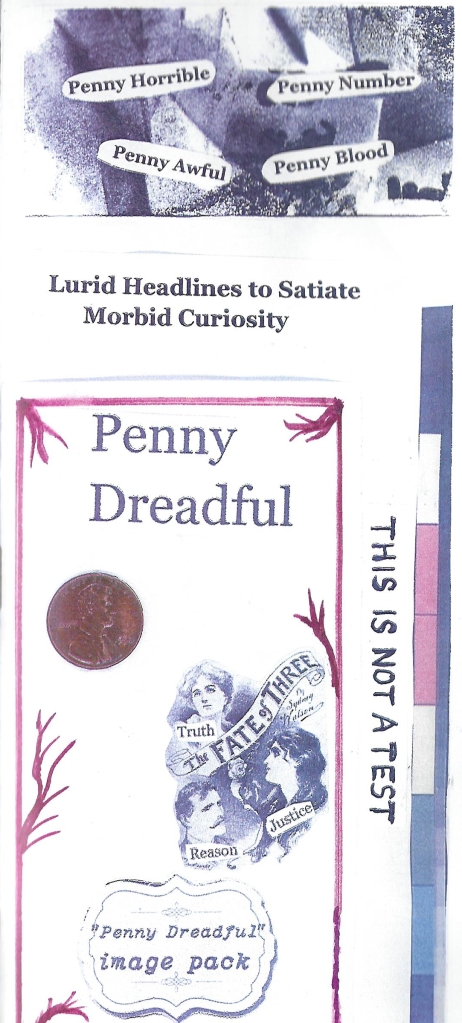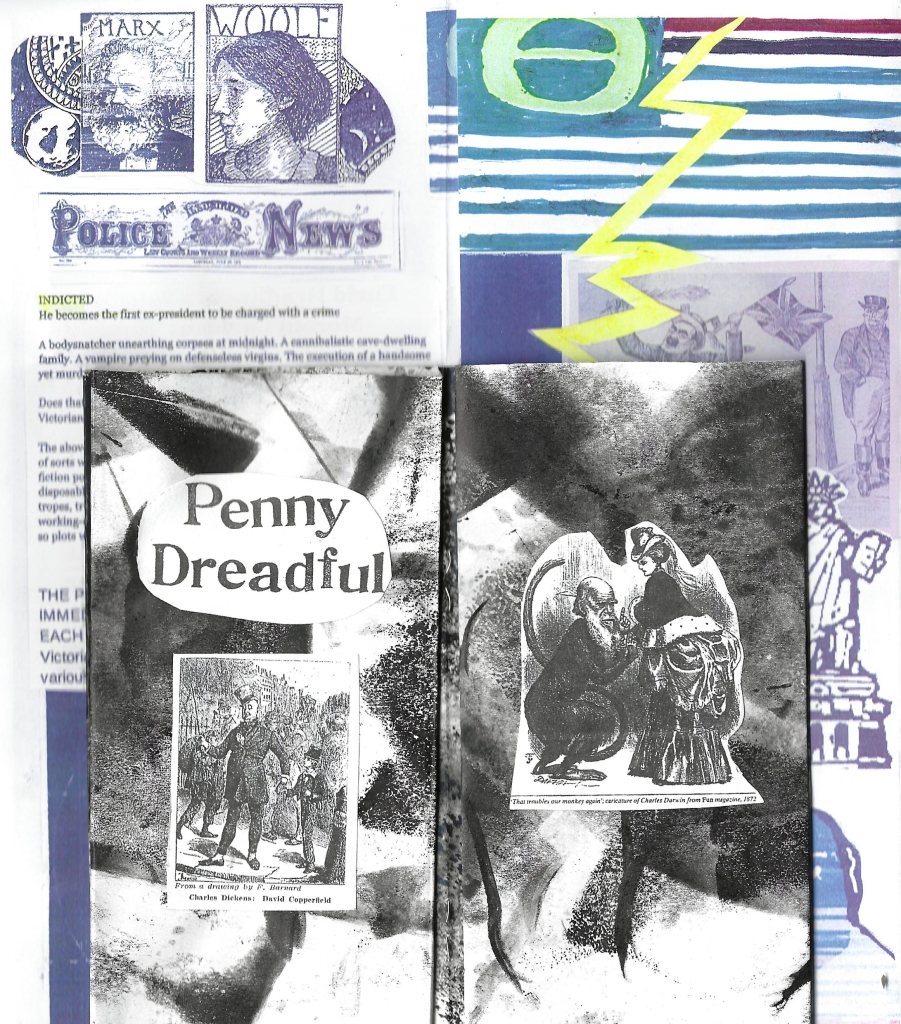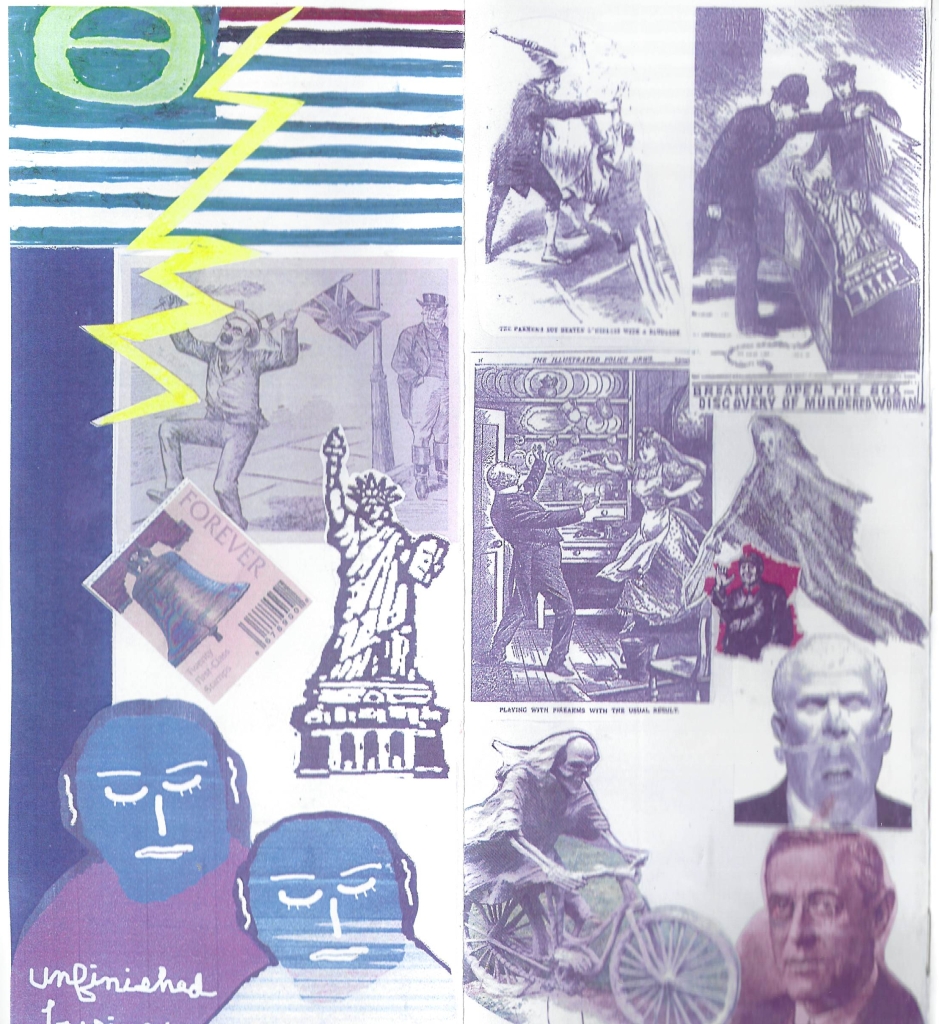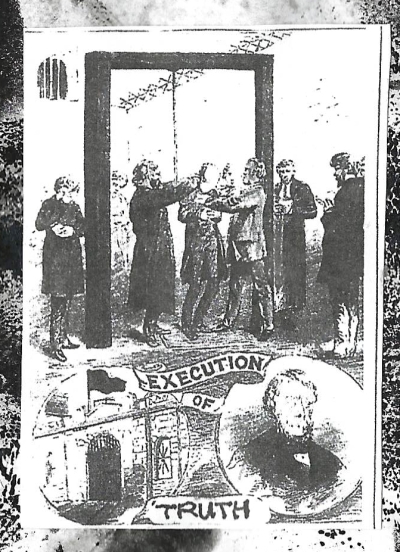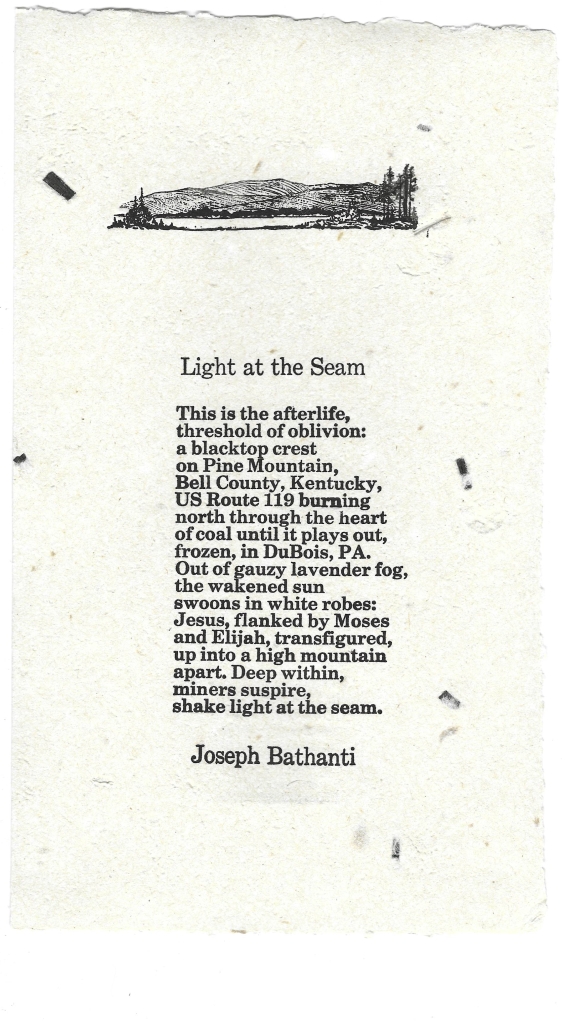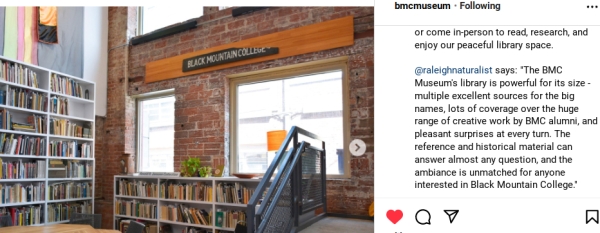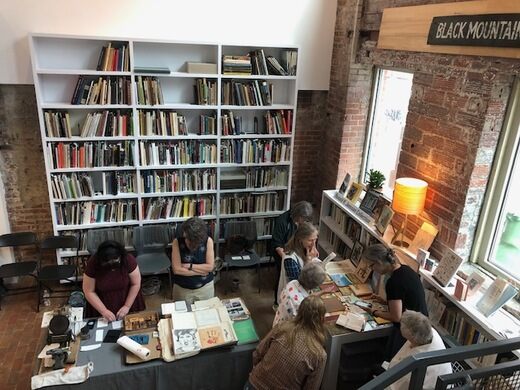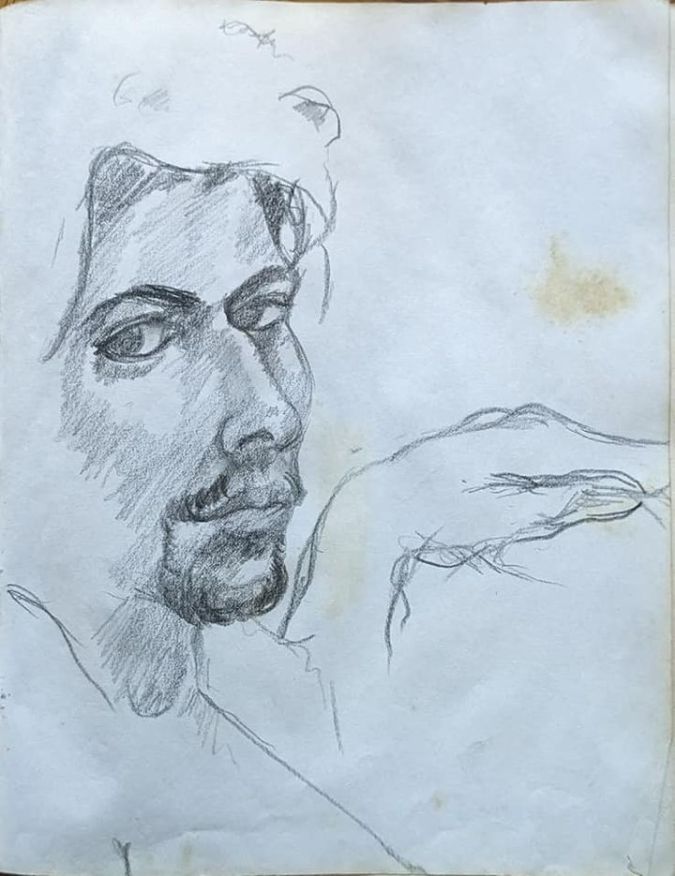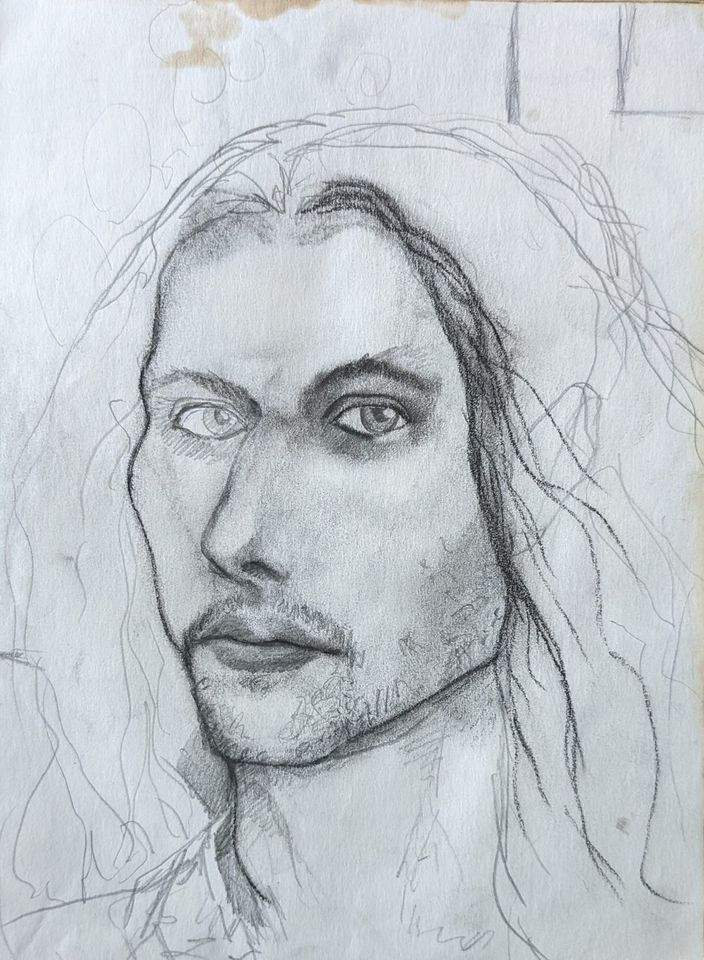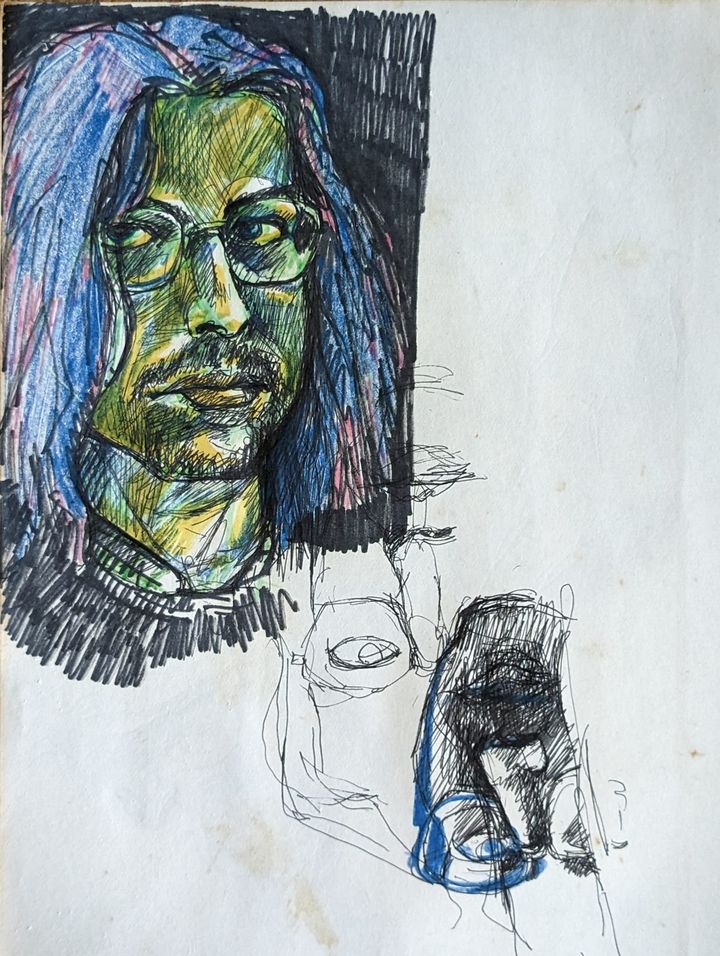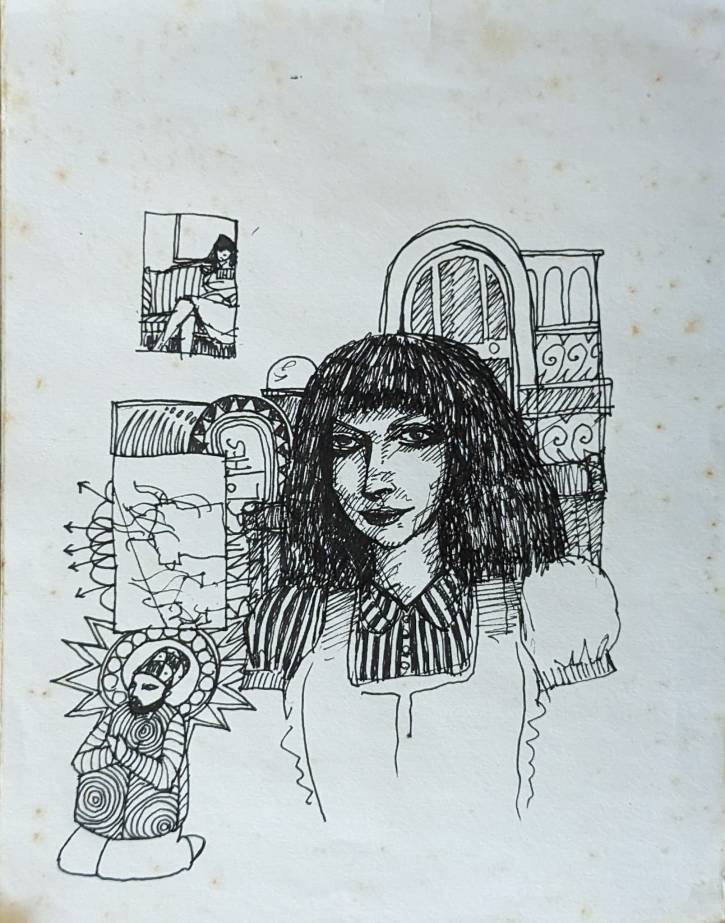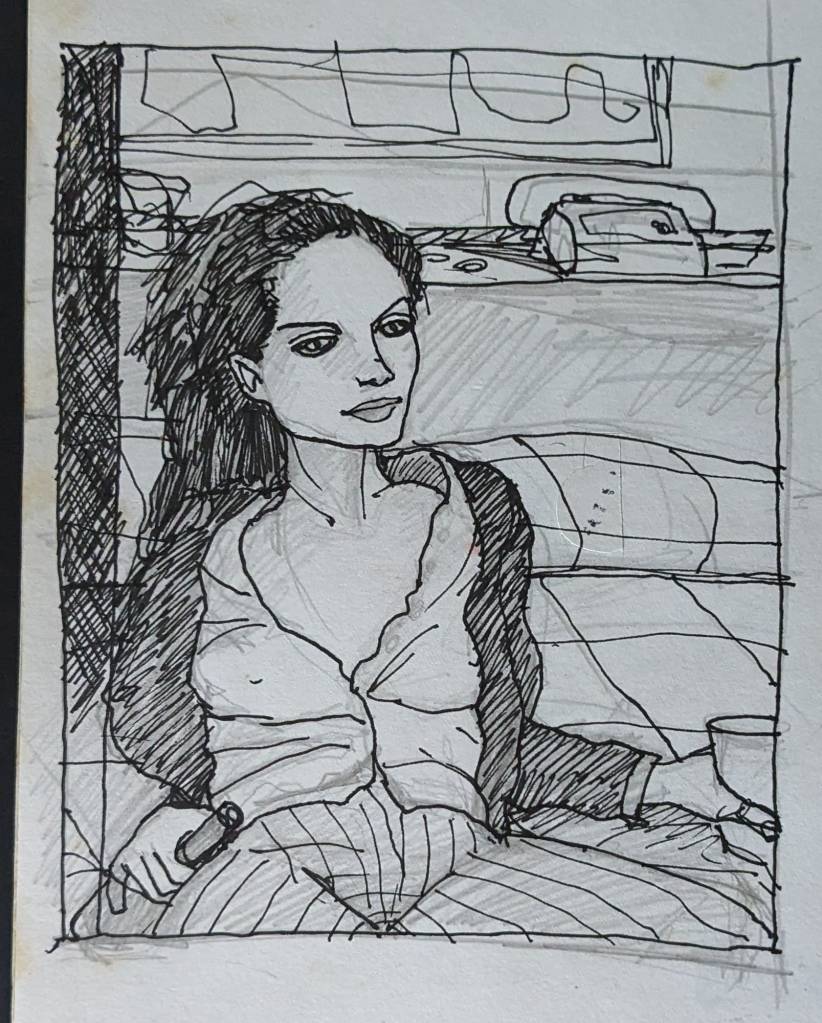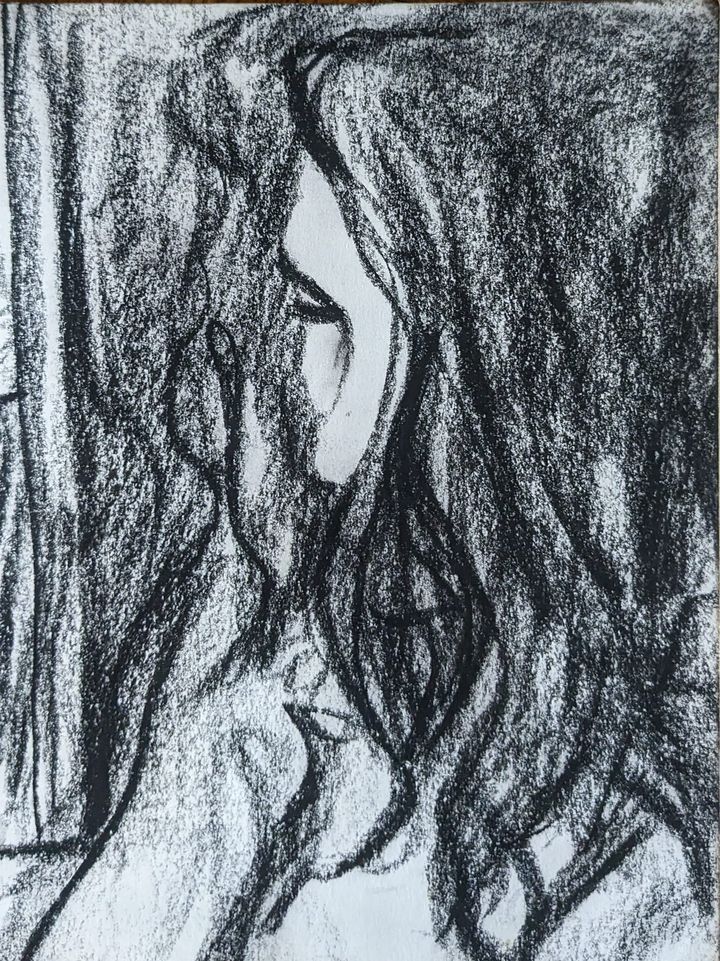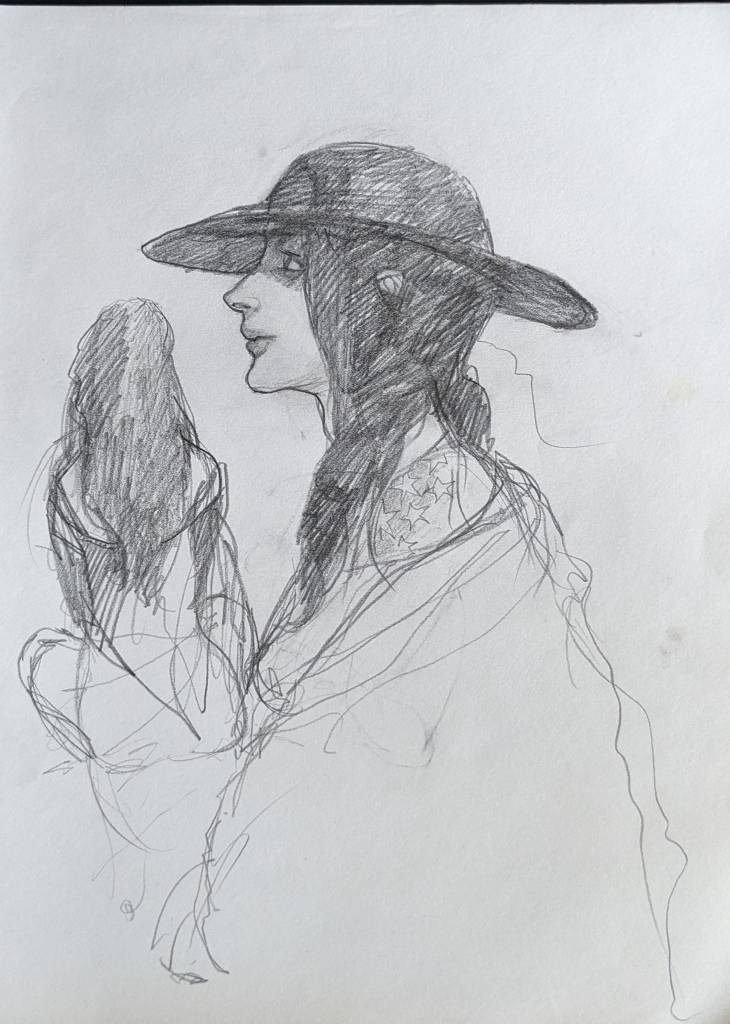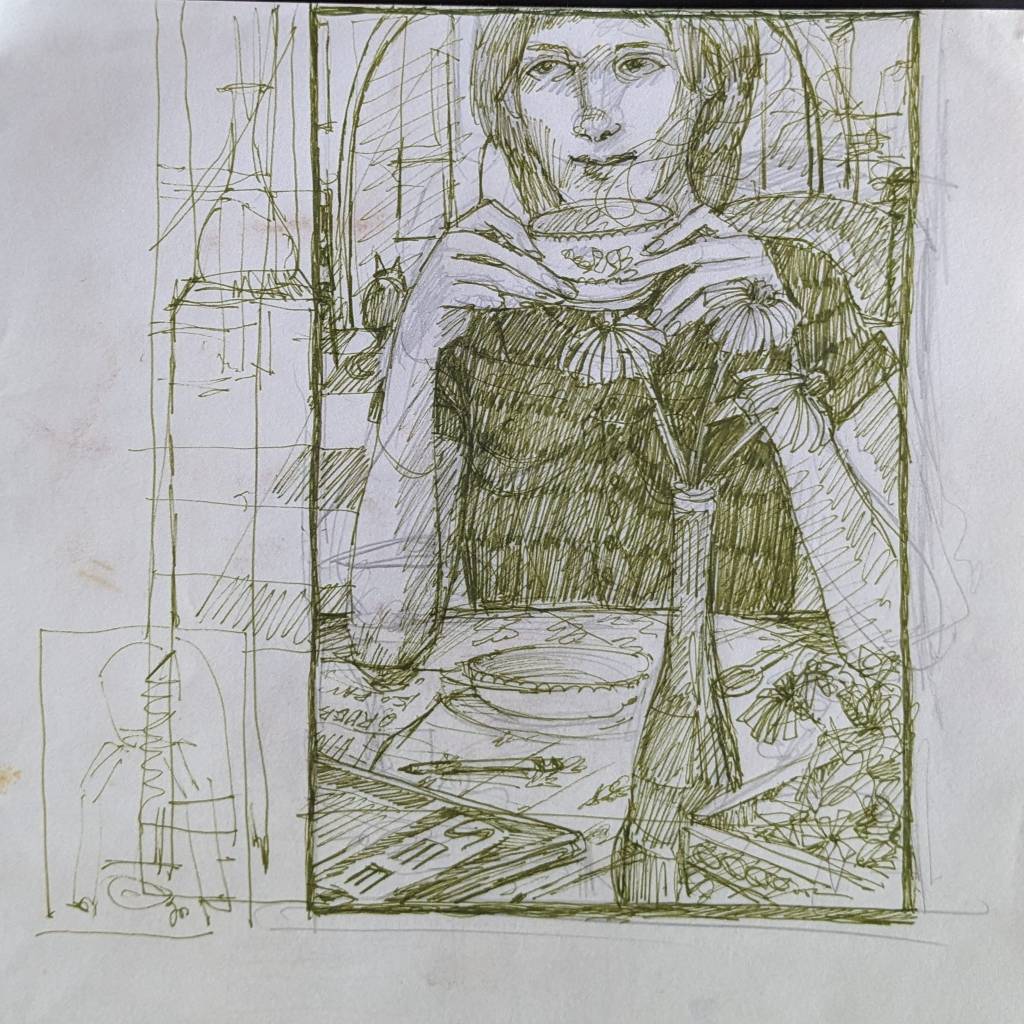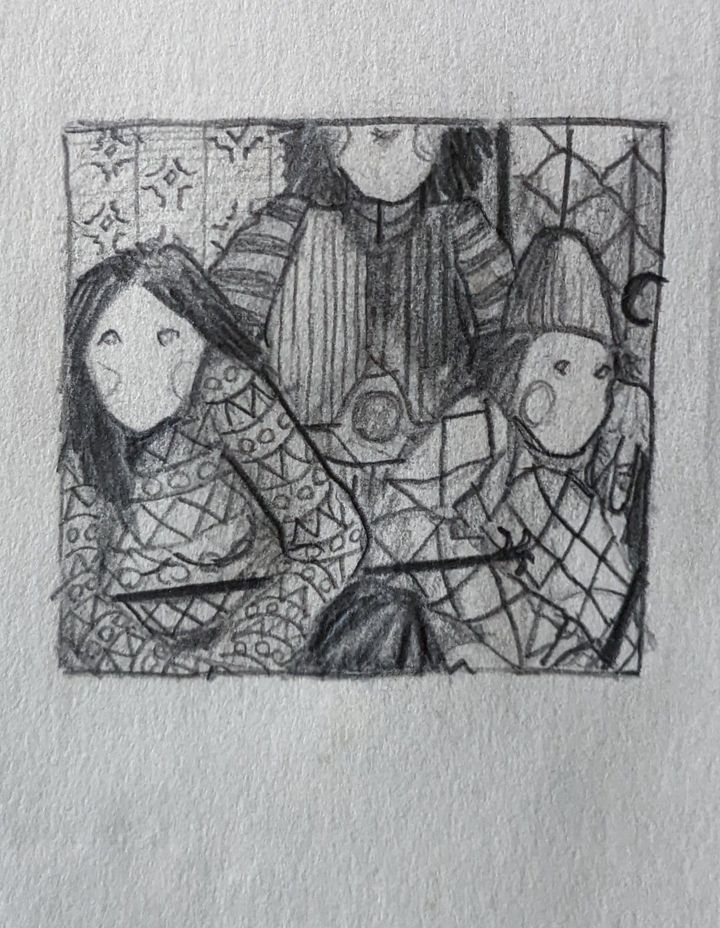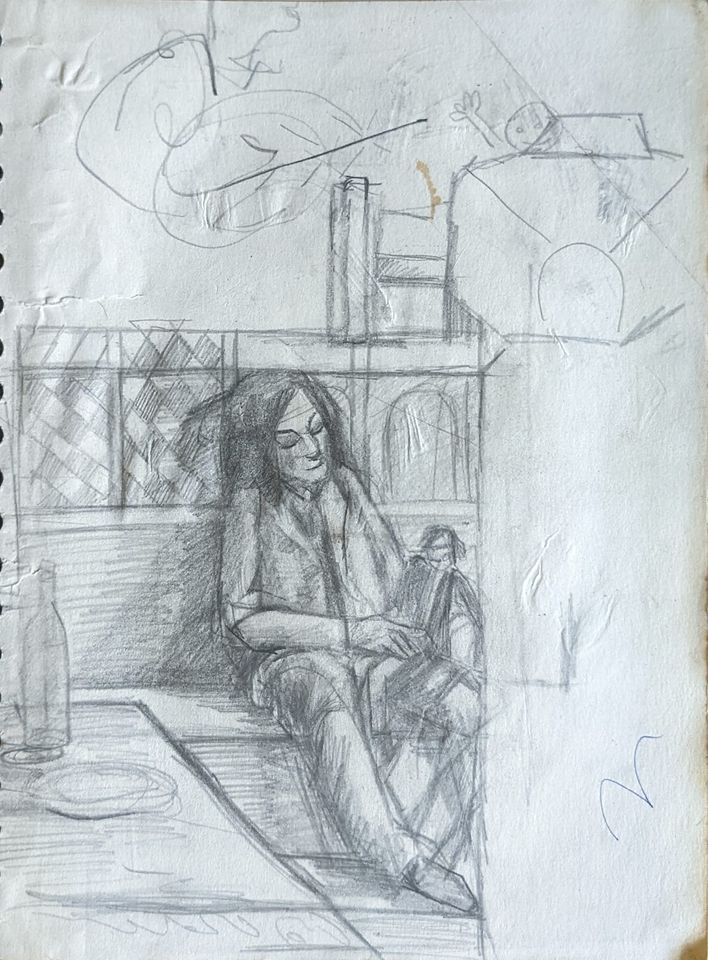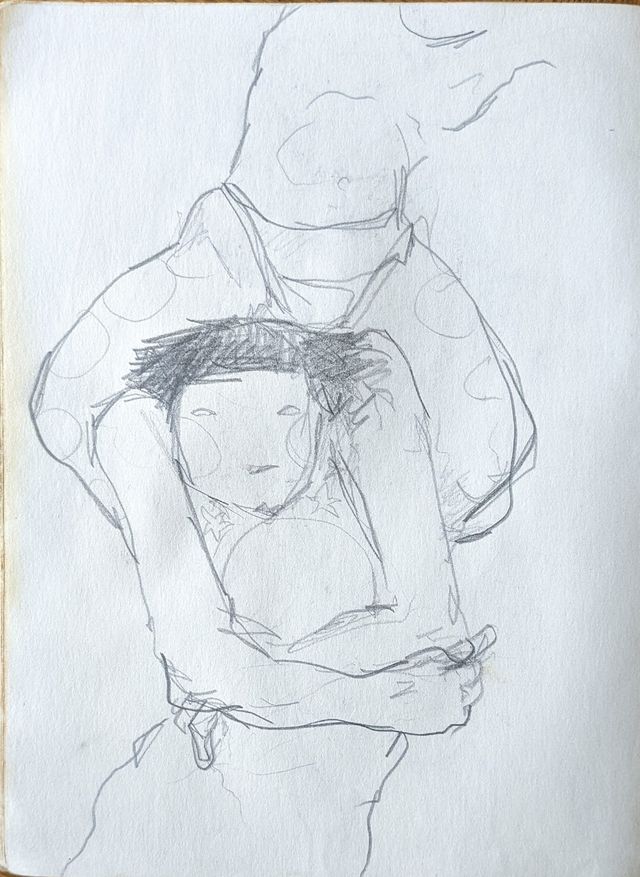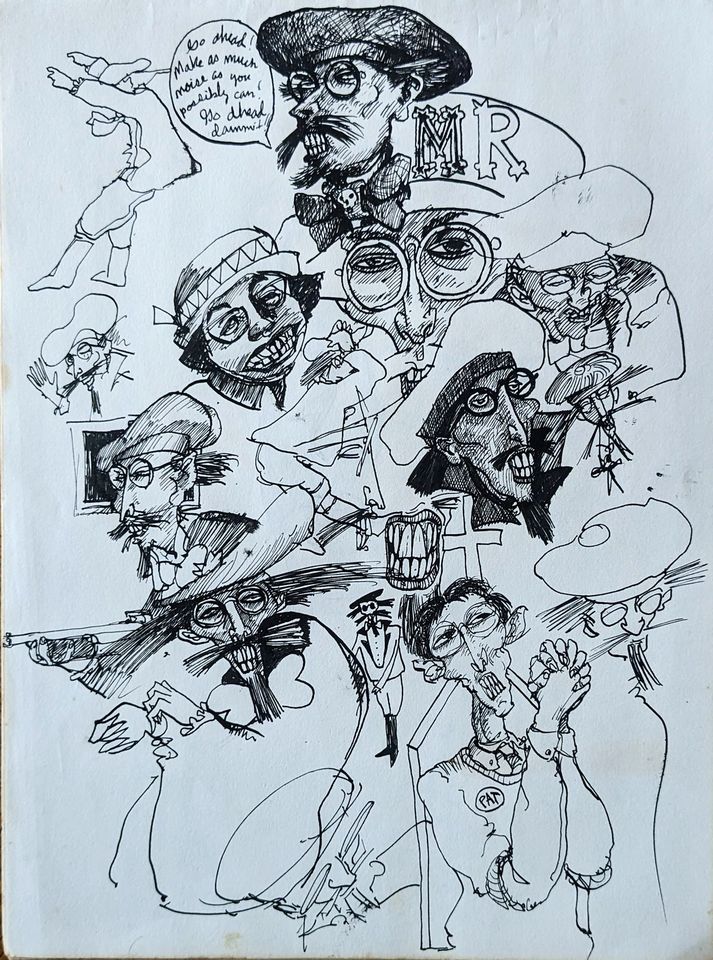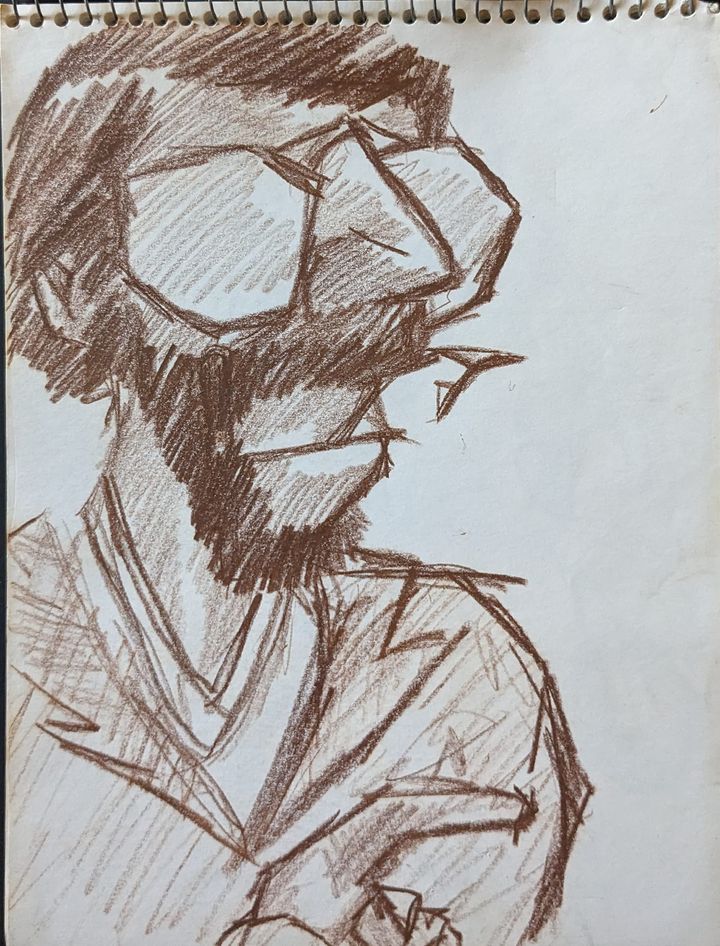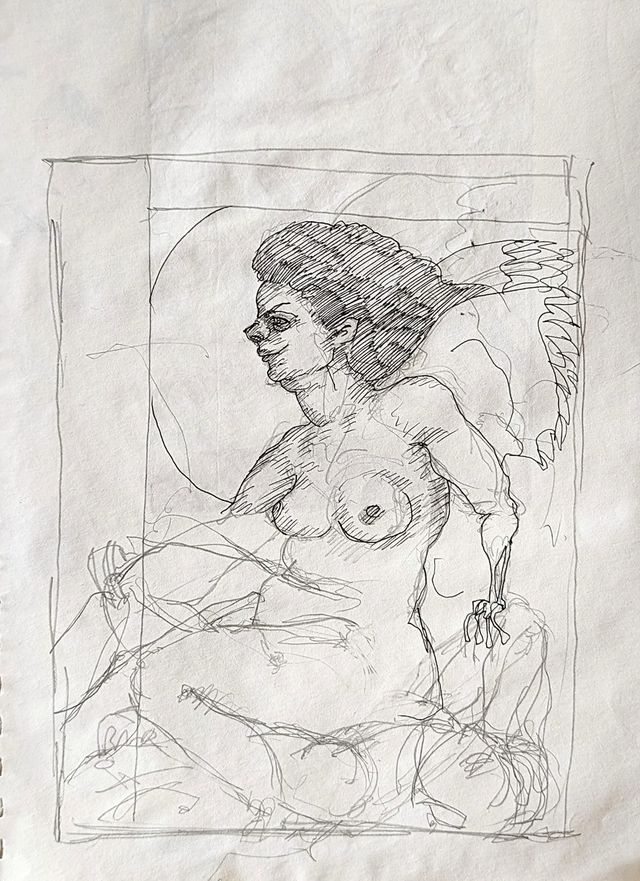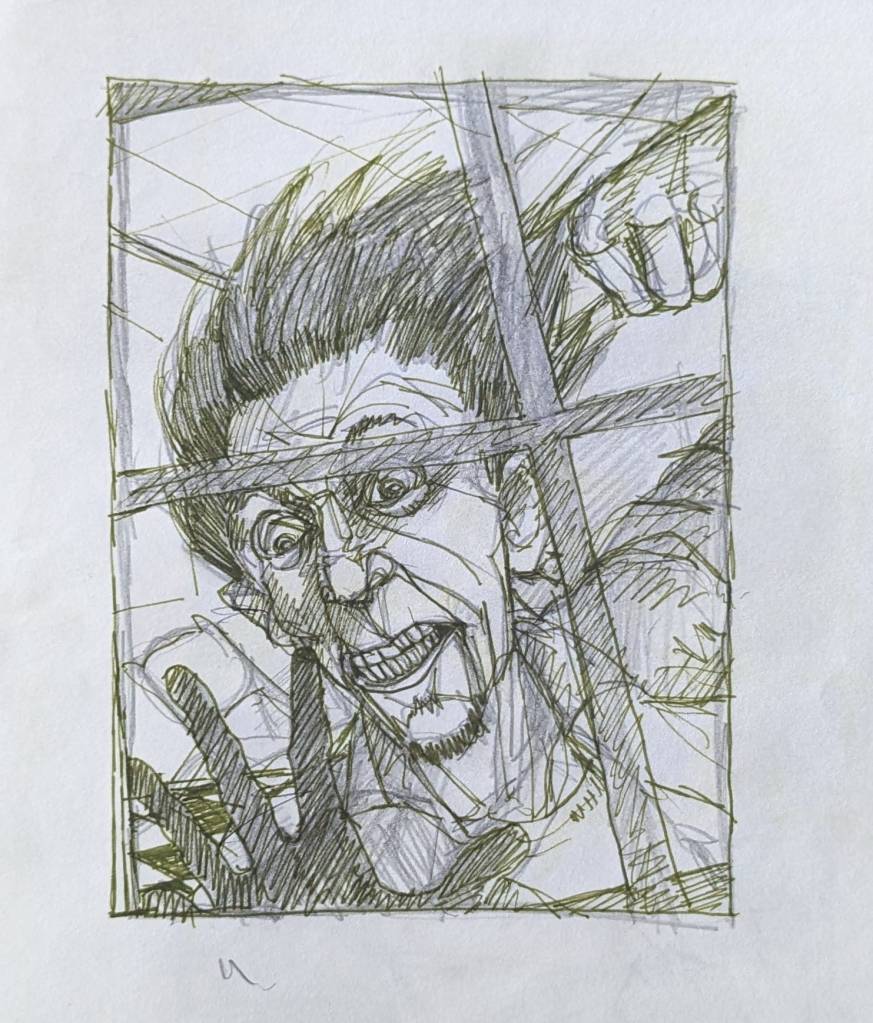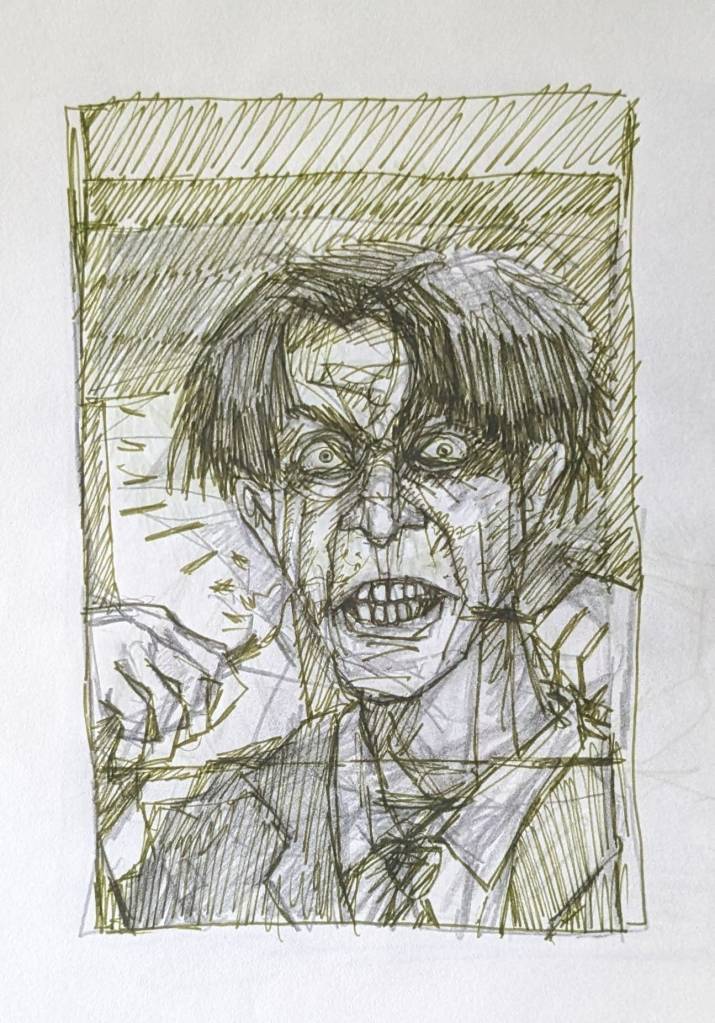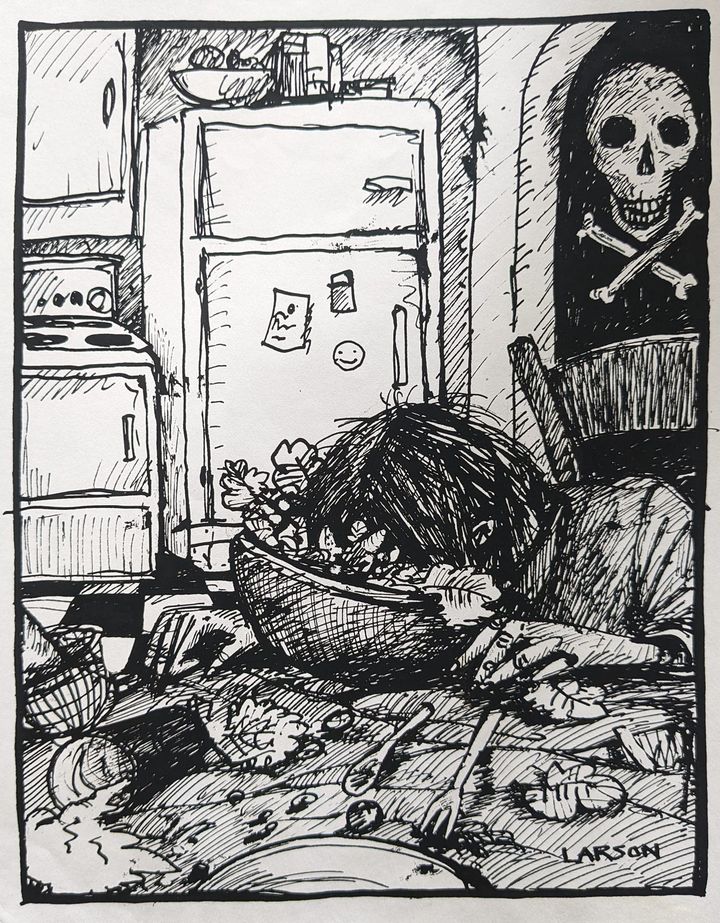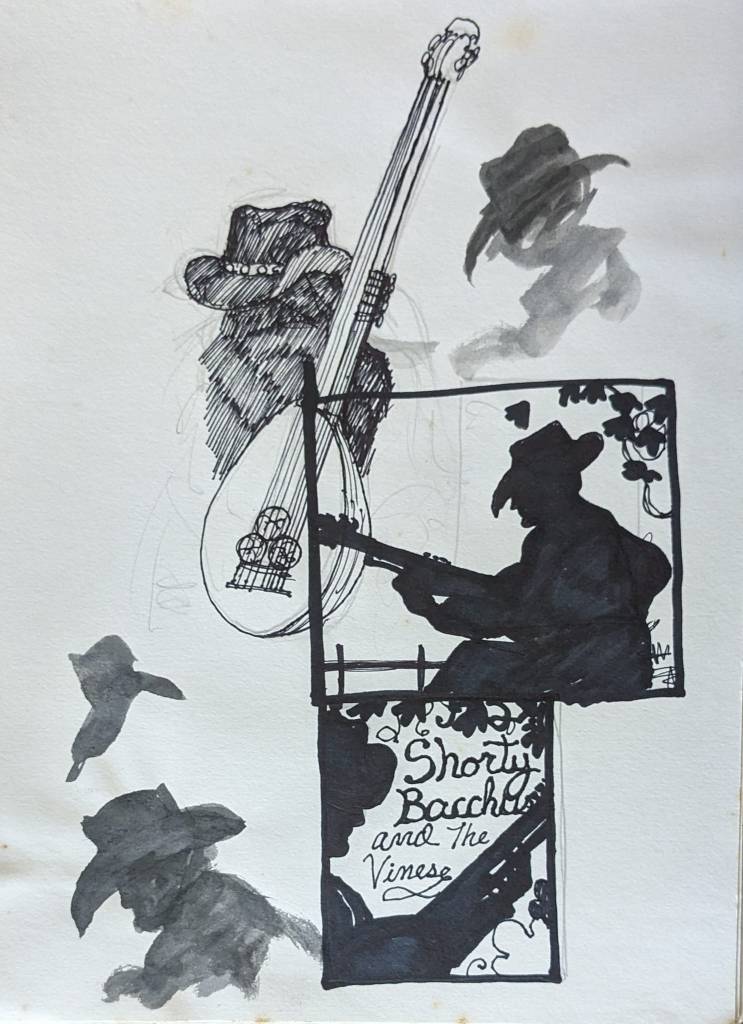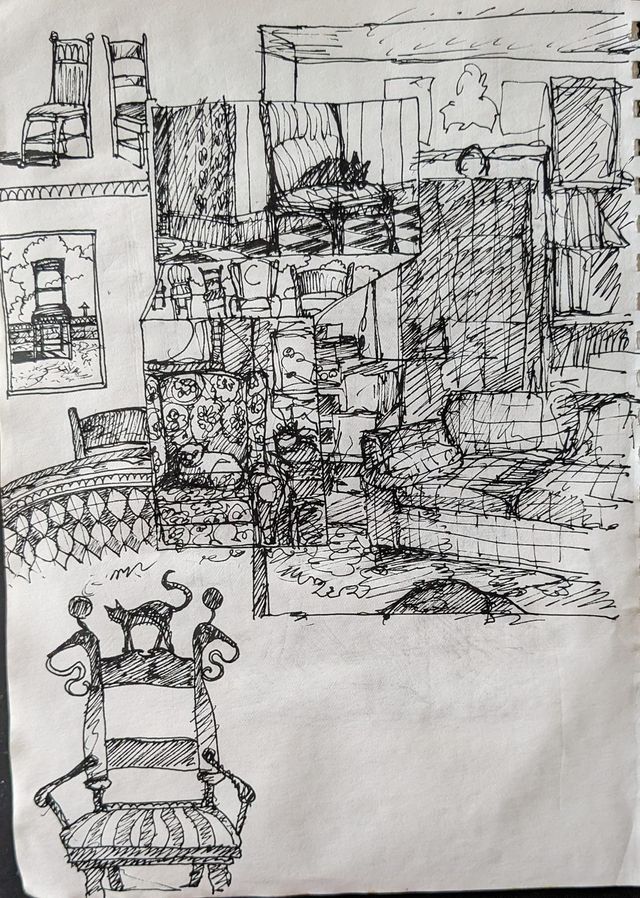PENNY DREADFUL an essay in small print
My latest and biggest ever mail art is out in the world in an edition of 120! Based on an early form of street literature I learned about from Dr. Charles Edge at UNC-CH in the early 70’s. I previously used the format in a self-publishing project with 6th graders at Glenwood Elementary my final year in Chapel Hill. Sent one year from an inauguration that will be a watershed for our country – one way or the other.
The format is a 2-sided color photocopy enclosing a small booklet made of an 11×17 sheet strategically used to clean off excess ink from the platen after letterpress printing nature book covers. I also used these for the zine version of my pandemic mail art piece, Plague Daze.
Historic images of Penny Dreadful covers and other historical print images (occasionally modified) were cut out and glued into the booklet. Over 3000 pieces! Not all are shown.
Throughout, the reproduced pencil drawings are my tracings and re-drawings of print images. Hilariously, the mounted penny is the specific reason this mailing is slightly too thick to qualify as first class by current (much stricter) regulations. Also, mounting the penny with glue on the back side is surely a defacement, which is a federal offense. I love the subversion but I fervently hope none get returned (109 are in the mails as I write).
A big thanks to contributors of images: David Larson, John Justice, Jonathan Laurer and of course the online resources for Penny Dreadfuls. This mailing was sent in the memory of Ray Johnson, correspondance artist extraordinaire. Richard C, Ray J’s curator, and John Justice received draft versions of the project which were essential in finalizing the final design. Mail art lives!
Our country and its democracy, such as it is, WILL survive – American history is filled with far worse episodes. Besides, the really big boys are not going to let our lucrative systems break down – and The System is inexorably getting more progressive and global all the time – but this has been a hell of a wake-up call for all of us. God bless us all.
Feedback on Penny Dreadful
Mary R: Shadow and light conjoined in a delightful dreadful death of democracy, a fine memento mori for Ray….. most grateful and amazed!
Alyssa S: It was such s surprise and delight to receive! I’m looking forward to spending more time with it. Each look, I catch something I didn’t see before.
Cheryl C T: There’s so much to see. Each time I look, I find another interesting detail.
Lee M C: I am really moved by this work..opening it and being..yes this is today and yesterday and the impending proverbial bad penny! amazing imagery , prophetic synchronicity
Eric N:Got my Penny Dreadful mail art a few days ago. Thank you so much–a remarkable assemblage. I love it
Marcia C: What a wonderful surprise to have your very cool little book arrive in the mail. Thank you so much! Penny Dreadful is a rouge book that has some wonderful fingerprints on it. I can see all your hand work and paste and stick and fold.
Jen C.: You have lit up my imagination once again, John.
Light at the Seam – a poem by Joseph Bathanti
The latest publication by The Paper Plant press is this broadside of a poem by Joseph Bathanti, a former NC Poet Laureate, ASU professor of creative writing, and the author of numerous volumes of poetry. This broadside was published in conjunction with ReVIEWING 14, the Black Mountain College conference which I attend each year and for which I create handouts related to the conference. This broadside is available for $10 plus $2 shipping – you can order here.
The Black Mountain College Museum + Art Center in Asheville has become ever more dear to my heart as I have developed a retirement habit of spending time most weeks in its library as well as that of the Center for Craft and the special collections room of Pack Library. The BMCM+AC staff used a quote from me to promote the library:
Soon after the BMC museum moved to its new larger location o Pack Square, I was privileged to conduct a special workshop in the library space celebrating the value of book arts in protecting freedom of cultural expression. Participants made paper, letterpress printed a quote on it, and explored my teaching collection of books as creative objects.
My longtime fascination with Black Mountain College has been rewarded with all the ways I have been able to benefit from attending the conference, visiting the museum, and teaching and learning in association with the wonderful community I have found through my pursuits. The current show, Weaving at Black Mountain College, was co-curated by Julie Thomson, a private scholar and friend who asked me to letterpressprint a sign and some response sheets for an interactive installation in the show.
The awful flip phone picture (by me) shows the letterpress sign and also a circular paper construction that I made emulating Buckminster Fuller’s Great Circles. Alice, program director at the museum, kindly allows my labeled paper construction to reside on this library tabletop. So here is my work in the art library I love to spend time in! Hope you visit this place sometime!
Sketchbook Selections and Selfies
Alan B., the de facto steward of David Larson’s artistic estate, has put many hours into going through the pile of David’s notebooks at the Sasser Street home and putting up interesting images on the DEL Art Facebook page. Here is a selection of the best of those, featuring self-portraits, friends, drafts for finished works, the origins of the Duds, and some mighty wild and entertaining ideas.
**************
********************
********************
Highly Personal Rauschenberg Exhibit Brings Back Memories
all images shown in deference to Robert Rauschenberg’s estate
The Black Mountain College Museum + Art Center is hosting a traveling exhibit of a special set of work by Robert Rauschenberg – gifts, many made just for her, to his studio manager and confidant of 30 years, Bradley Jeffries. It’s an outstanding show with an initial grouping that is one of the most sensually beautiful I have ever seen in this or any museum. A good range of different media from this most versatile artist is shown, but a predominant one is solvent transfer, which captures pre-existing images, from text to photos to anything, in a dreamy and bluish hued tone of nostalgia.
Much nostalgia for me in seeing a certificate of participation in a glass case, earned by Ms. Jeffries, for completion of the workshop The Power of Art, a program sponsored by Robert Rauschenberg at the Lab School, a self-contained day school in Georgetown in Washington, D.C. which serves students with learning differences. Her’s was for 1999; I was a charter participant the first year in 1994. I was a new art teacher at The Achievement School (now The Fletcher Academy) and applied for the workshop using student linoleum prints executed on scrap linoleum from the school’s gymnasium.
Mr Rauschenberg spent the day with us,as I describe on my Black Mountain College page.
Robert Rauschenberg found out as an adult that he had a learning disability ( as distinguished from being what he thought was “stupid”) from Sally Smith, founder of The Lab School. He became a supporter of the school, and the “Power of Art” program, of which I was a charter participant, rewarded art teachers who worked with that that population. Mr Rauschenberg treated us to a presentation along with his assistant, gave us signed posters, a five hundred dollar gift certificate to Jerry’s Artarama,and sat and listened to each of us present about our work. That evening, we were feted at a private reception at the National Gallery’s East Wing, and Mr Rauschenberg favored us with a tour of his own work on the walls. He discussed his decision to create the “white painting” while at Black Mountain (Josef Albers thought it a needless extreme), and he gave a vivid description of painting the huge 25 foot work which was on display in the main room -smearing his hands with the white lead paint for hours and then having to go into immediate treatment for weeks because of the lead poisoning. He was charming and down-to-earth, yet fragile and a bit ethereal in his personal presence. That was a wonderful day.
Below is a photcopy of my certificate. Sadly (and thoughtlessly) I displayed the original near a south-facing window and it has faded considerably. Just as bad, I used dorm room sticky to mount the poster Mr. Rauschenberg SIGNED. Such is life when you are a generalist with too many pies cooking. But now I have added this event to the several that have linked me repeatedly to Black Mountain College over the years, leading me now to be a private scholar in the field and an active participant in the activities of the wonderful BMC museum in downtown Asheville.
BMC Conference Features Leo Amino and More
The 13th Black Mountain College conference called ReVIEWing features Leo Amino, of whom I had not heard before this event. He pioneered the use of polymer resins as the material for abstract sculpture. My annual BMC give-away is pictured above, with a book mark quote from Amino experimentally coated with polymer resin.
This year’s conference is marked by an ever evolving process of globalizing or non-Westernizing the narrative of art in America while signaling the amazing resilience of the importance of Black Mountain College principles and experiences in that narrative. BMC was very early in integrating its faculty and student body, and the Sunday campus tours always recall the major role of beloved African-American staff were in college life. The role of students in governing the college, the powerful roles played by women throughout its history (especially during WW II and then much less so in the last failing years), and the progressive experiential and material-based art instruction at the center of its teaching, all made for a wonderful readiness to explore new ideas that permeated the atmosphere and the work done. Now BMC scholarship is investigating the ways artists like Leo Amino created art that helped open up the artistic tradition to a wider set of values.
